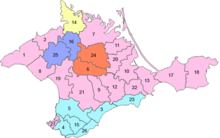
The flag of Crimea is the flag of the Autonomous Republic of Crimea in Ukraine and the Republic of Crimea controlled by Russia. The flag was officially adopted on 24 September 1992 as the flag of the Republic of Crimea, readopted on 21 April 1999, then readopted on 4 June 2014 as the flag of the Republic of Crimea, annexed by the Russian Federation.

In 1954, the Presidium of the Supreme Soviet transferred the Crimean Oblast to the Ukrainian SSR from the Russian SFSR. The territory had been recognized within the Soviet Union as having "close ties" to the Ukrainian SSR, and the transfer itself commemorated the Union of Russia and Ukraine Tercentenary. Amidst the dissolution of the Soviet Union in 1991, the Ukrainian SSR seceded from the Soviet Union and Ukraine continued to exercise sovereignty over the territory as the Autonomous Republic of Crimea. For just over two decades after 1991, Russia did not dispute the Ukrainian administration in Crimea, but retracted this stance on 18 March 2014, when Crimea was annexed by Russia after coming under Russian military occupation. The Soviet-era transfer of Crimea has remained a topic of contention between the two countries in light of the Russo-Ukrainian War, as the Russian government has stated that the Ukrainians must recognize Russia's sovereignty over the territory as part of any negotiated settlement to end the Russian invasion of Ukraine, which began in 2022.
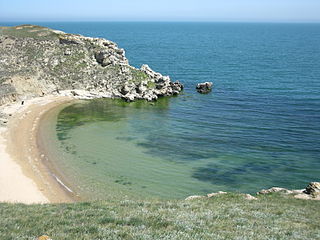
Lenine Raion or Yedy-Kuiu Raion was one of the twenty-five districts of the Autonomous Republic of Crimea in Ukraine until its abolition in 2020. It continues to be used by the Russian administration known as the Republic of Crimea, as Russia has occupied Crimea since 2014.

The Russian Soviet Federative Socialist Republic, previously known as the Russian Soviet Republic and the Russian Socialist Federative Soviet Republic, as well as being unofficially referred to as Soviet Russia, the Russian Federation, or simply Russia, was an independent federal socialist state from 1917 to 1922, and afterwards the largest and most populous constituent republic of the Soviet Union (USSR) from 1922 to 1991, until becoming a sovereign part of the Soviet Union with priority of Russian laws over Union-level legislation in 1990 and 1991, the last two years of the existence of the USSR. The Russian SFSR was composed of sixteen smaller constituent units of autonomous republics, five autonomous oblasts, ten autonomous okrugs, six krais and forty oblasts. Russians formed the largest ethnic group. The capital of the Russian SFSR and the USSR as a whole was Moscow and the other major urban centers included Leningrad, Stalingrad, Novosibirsk, Sverdlovsk, Gorky and Kuybyshev. It was the first socialist state in the world.

During its existence from 1919 to 1991, the Ukrainian Soviet Socialist Republic consisted of many administrative divisions. Itself part of the highly centralized Soviet Union, sub-national divisions in the Ukrainian SSR were subordinate to higher executive authorities and derived their power from them. Throughout the Ukrainian SSR's history, other national subdivisions were established in the republic, including guberniyas and okrugs, before finally being reorganized into their present structure as oblasts. At the time of the Ukrainian SSR's independence from the Soviet Union, the country was composed of 25 oblasts (provinces) and two cities with special status, Kiev, the capital, and Sevastopol, respectively.
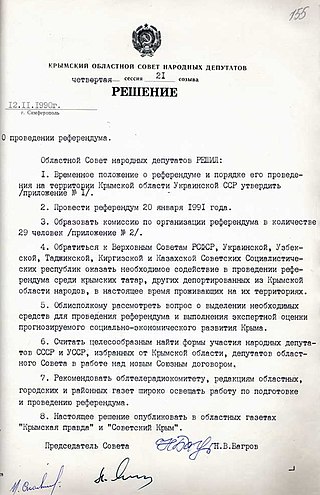
A referendum on autonomy was held in the Crimean Oblast of the Ukrainian SSR on 20 January 1991, two months before the 1991 All-Union referendum. Voters were asked whether they wanted to re-establish the Crimean Autonomous Soviet Socialist Republic, which had been abolished in 1945. The proposal was approved by 94% of voters.

The Autonomous Republic of Crimea is an administrative division of Ukraine encompassing most of Crimea that was annexed by Russia in 2014. The Autonomous Republic of Crimea occupies most of the peninsula, while the City of Sevastopol occupies the rest.
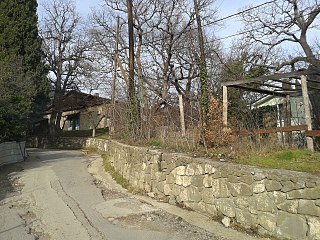
Danylivka is a rural settlement in the Yalta Municipality of the Autonomous Republic of Crimea, a territory recognized by a majority of countries as part of Ukraine and annexed by Russia as the Republic of Crimea.
Kuibysheve is a rural settlement in the Yalta Municipality of the Autonomous Republic of Crimea, a territory recognized by a majority of countries as part of Ukraine and annexed by Russia as the Republic of Crimea.
Soniachna Dolyna or Solnechnaya Dolina(Ukrainian: Сонячна Долина; Russian: Солнечная Долина; literally, Sunny Valley) is a village in the Sudak Municipality of the Crimea, a territory recognized by a majority of countries as part of Ukraine and annexed by Russia as the Republic of Crimea.
Myndalne or Mindalnoye is a village in the Sudak Municipality of the Crimea, a territory recognized by a majority of countries as part of Ukraine and annexed by Russia as the Republic of Crimea.
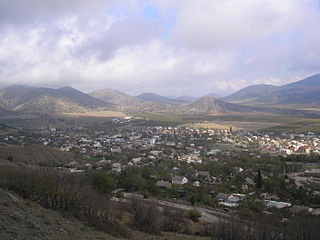
Vesele or Vesyoloye is a village in the Sudak Municipality of the Crimea, a territory recognized by a majority of states as part of Ukraine and annexed and claimed by Russia as the Republic of Crimea.
Bahativka or Bogatovka is a village in the Sudak Municipality of the Crimea, a territory recognized by a majority of countries as part of Ukraine and annexed by Russia as the Republic of Crimea.
Dachne is a village in the Sudak Municipality of the Autonomous Republic of Crimea, a territory recognized by a majority of countries as part of Ukraine and annexed by Russia as the Republic of Crimea.
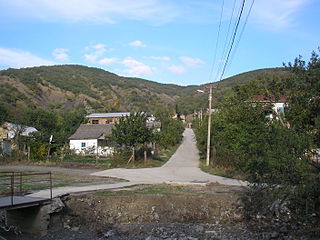
Hromivka or Gromovka is a village in the Sudak Municipality of the Crimea, a territory recognized by a majority of countries as part of Ukraine and annexed by Russia as the Republic of Crimea.
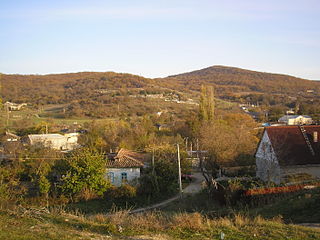
Hrushivka or Grushevka is a village in the Sudak Municipality of the Crimea, a territory recognized by a majority of countries as part of Ukraine and annexed by Russia as the Republic of Crimea.
Kholodivka or Kholodovka is a village in the Sudak Municipality of the Crimea, a territory recognized by a majority of countries as part of Ukraine and annexed by Russia as the Republic of Crimea.
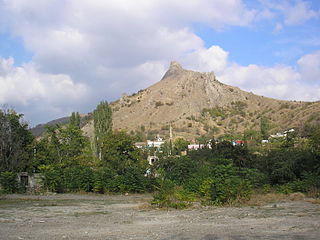
Mizhrichchia or Mezhdurechye is a village in the Feodosia Raion of Crimea, a territory recognized by a majority of countries as part of Ukraine and annexed by Russia as the Republic of Crimea.
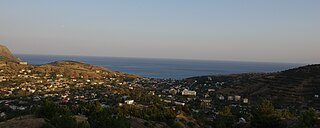
Morske or Morskoye is a village in the Sudak Municipality of the Crimea, a territory recognized by a majority of countries as part of Ukraine and annexed by Russia as the Republic of Crimea.

Perevalivka is a village in the Sudak Municipality of the Autonomous Republic of Crimea, a territory recognized by a majority of countries as part of Ukraine and annexed by Russia as the Republic of Crimea.
